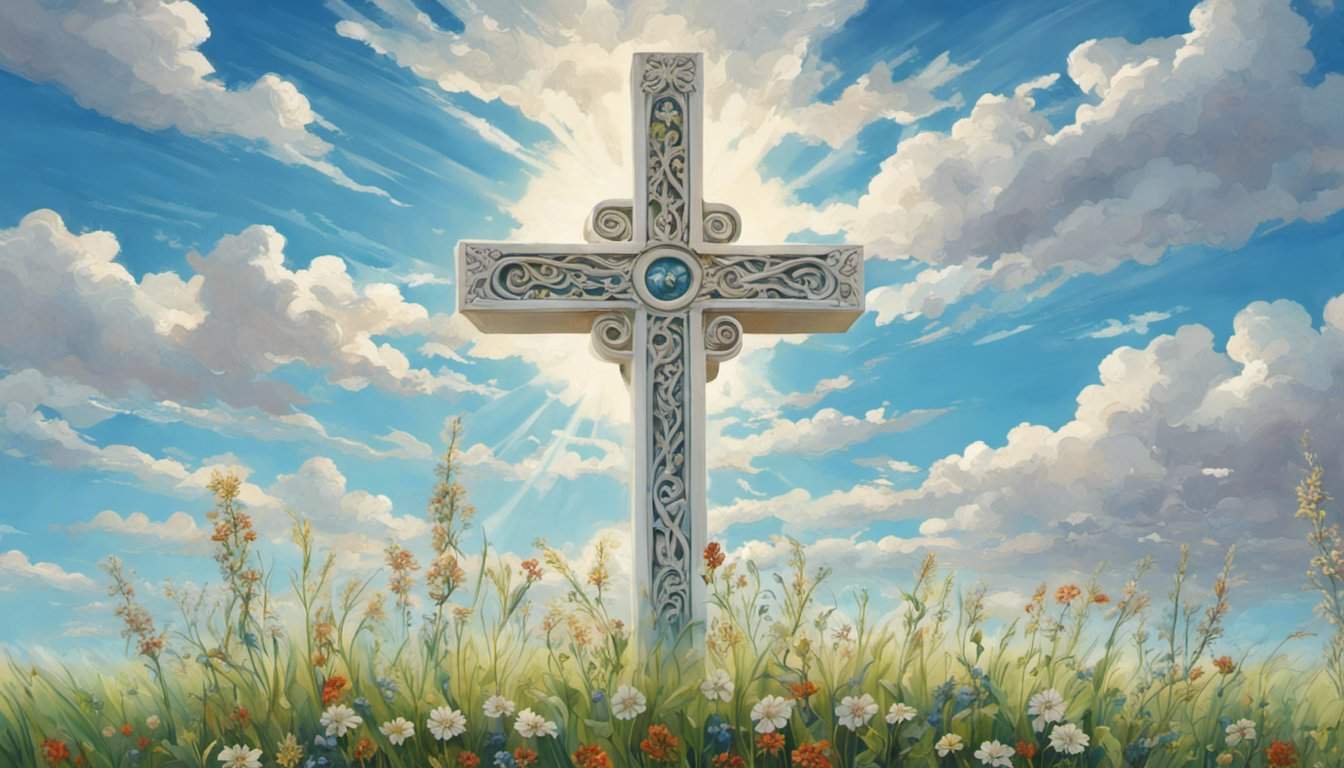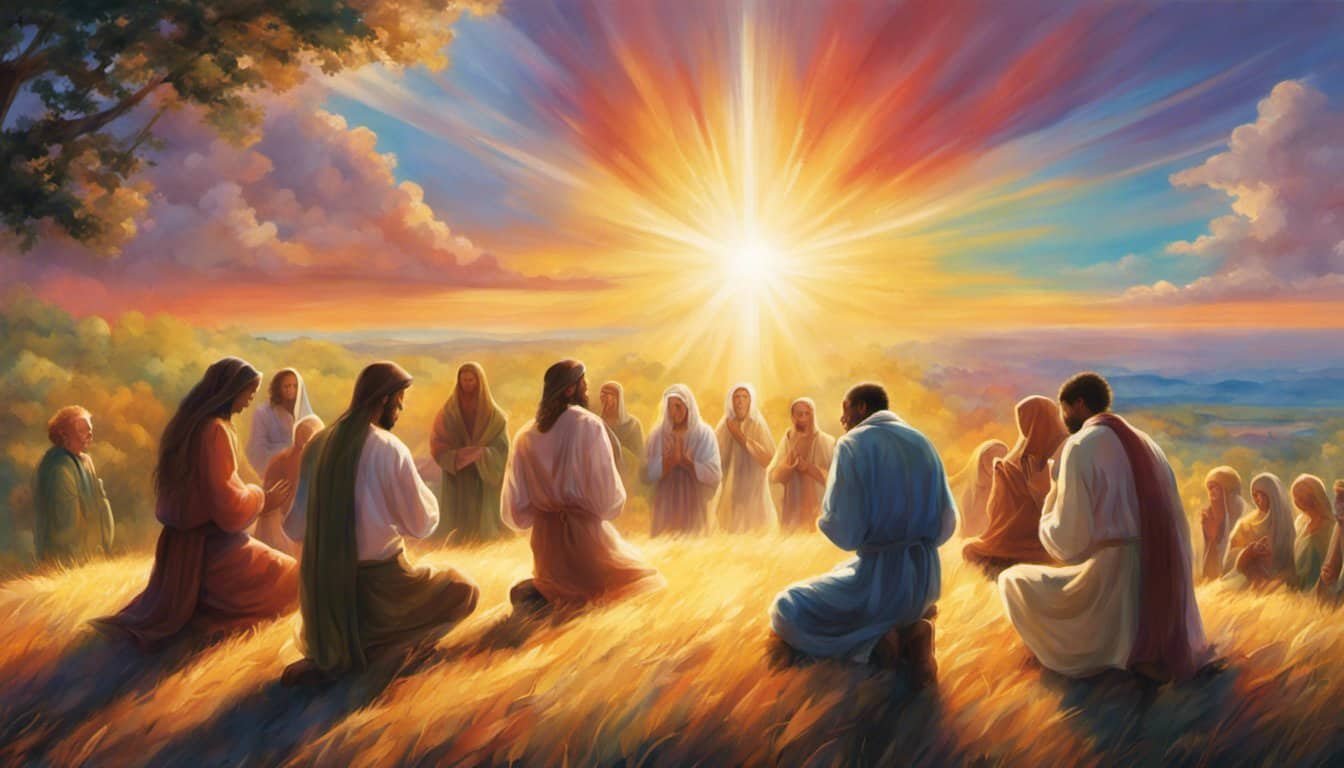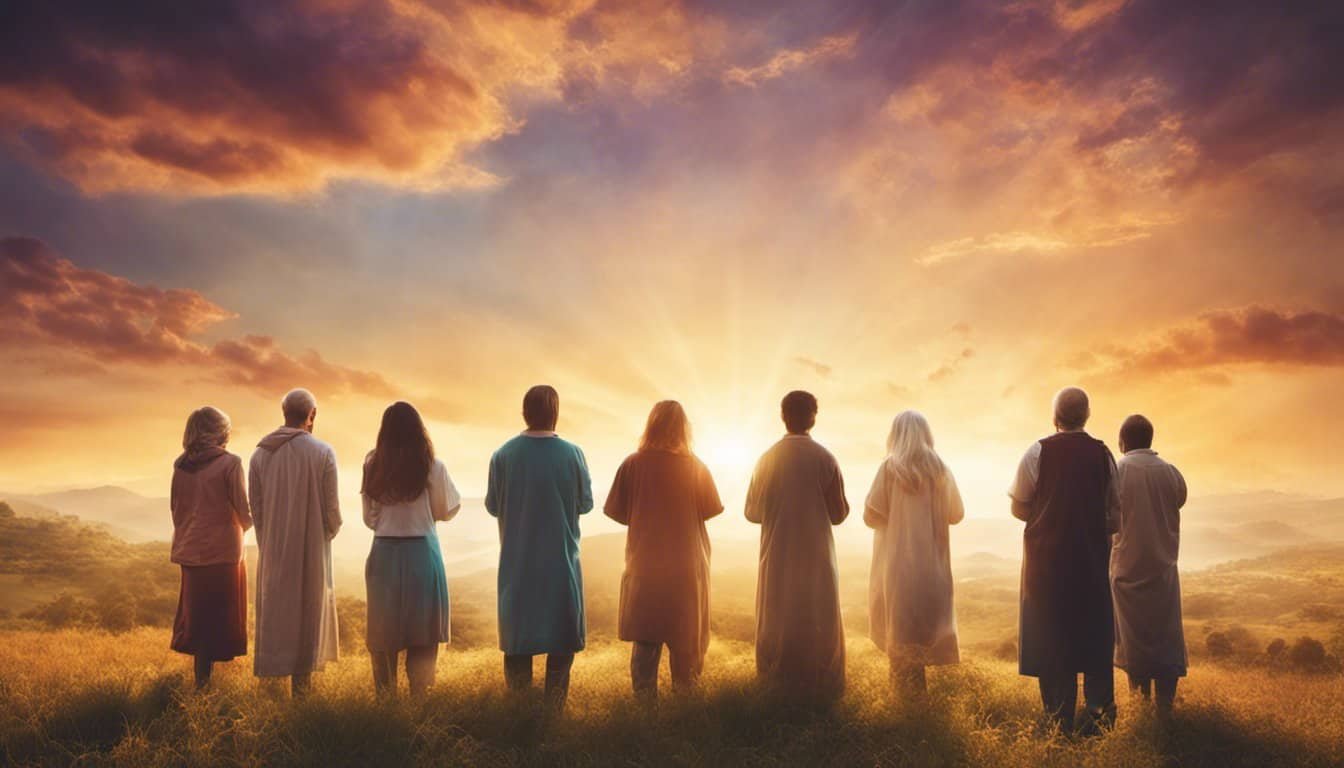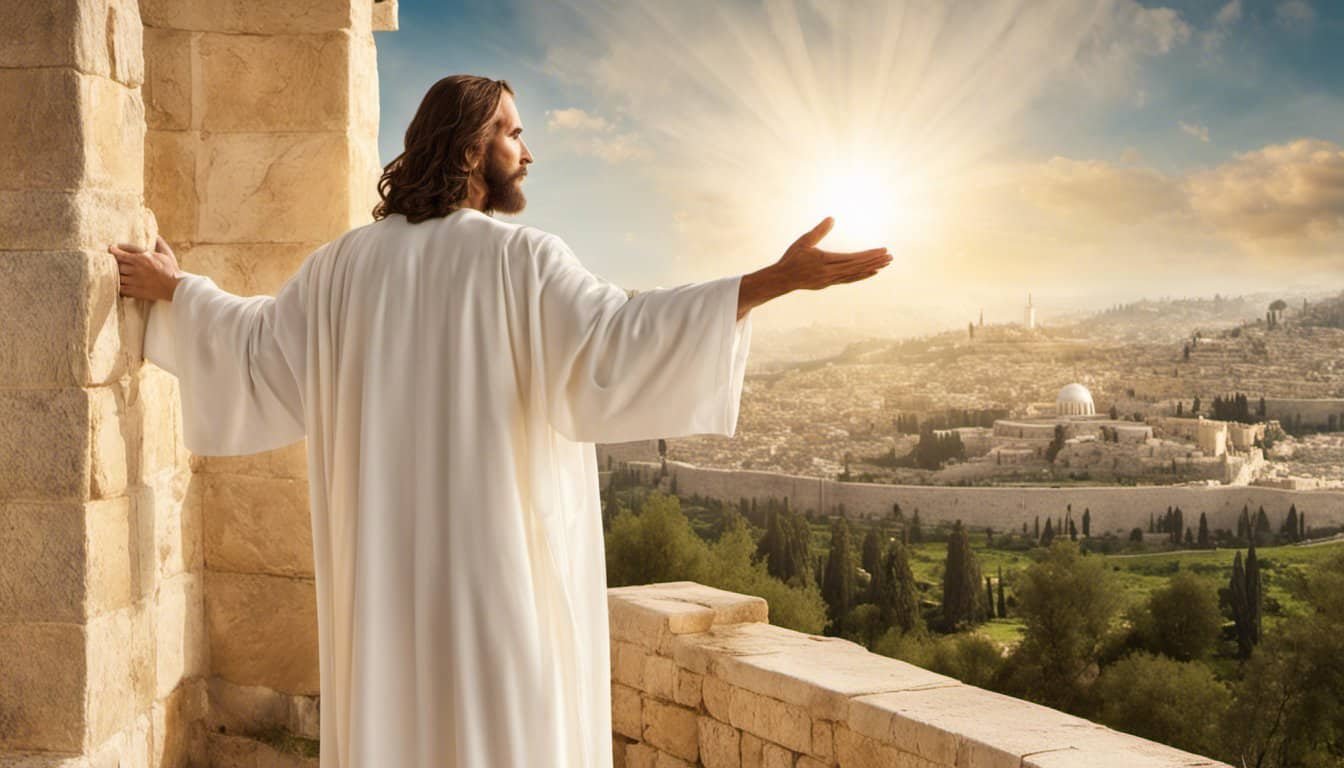When we think about the Old Testament, the image of ancient rituals and sacrifices often comes to mind. I’ve always been fascinated by how central these practices were to the daily lives of the Israelites. Sacrifices weren’t just occasional events; they were deeply woven into the fabric of their spiritual and communal life.
From daily offerings to annual festivals, the frequency and variety of sacrifices can be overwhelming. It’s intriguing to see how these rituals aimed to maintain a connection with the divine, seek atonement, and express gratitude. Join me as we explore how often these sacrifices were made and what they meant to the people of that era.
Understanding Sacrifices in the Old Testament

Sacrifices played a central role in the daily and spiritual lives of the Israelites. They offered various types of sacrifices to seek forgiveness, show dedication, and celebrate important events. Let’s break down the different types and their meanings.
Types of Sacrifices
In the Old Testament, you find several types of sacrifices, each with specific purposes. Here’s a quick rundown:
- Burnt Offerings: These were made to atone for sins, symbolizing complete surrender to God. Animals like bulls, rams, and birds were entirely consumed by fire on the altar (Leviticus 1:3-17).
- Grain Offerings: People offered grain or meal as a sign of devotion and thankfulness. These weren’t for atonement but to show gratitude and dedication to God (Leviticus 2:1-16).
- Peace Offerings: Also known as fellowship offerings, these involved part of an animal burnt, part given to priests, and part eaten by the offerer. They symbolized peace and fellowship with God (Leviticus 3:1-17).
- Sin Offerings: Made to atone for unintentional sins. The sinner placed their hand on the animal, transferring guilt, and then it was sacrificed (Leviticus 4:1-35).
- Guilt Offerings: Similar to sin offerings but focused on making amends for specific sins like theft, fraud, or sacrilege (Leviticus 5:14-6:7).

Realizing these different offerings can help you see how comprehensive and intentional the sacrificial system was.
Significance and Meaning
Each type of sacrifice carried deep meaning. First, burnt offerings represented total surrender. When an Israelite presented a burnt offering, they acknowledged their dependence on God and commitment to following His commands.
Grain offerings, on the other hand, reflected a grateful heart. They weren’t about sin but about celebrating God’s provision. It signifies recognizing the blessings and benevolence of God.
Peace offerings illustrated the communal and joyous relationship between God and the people. Eating part of the sacrificed animal fostered a sense of shared fellowship and thanksgiving in the presence of God.
Sin and guilt offerings dealt with the realities of human imperfection. These made reconciliation possible by transferring sin onto the animal, emphasizing God’s provision for forgiveness and restoration.
Understanding these sacrifices gives insight into the spiritual lives of the Israelites. You see their continuous interaction with the divine—feeling gratitude, seeking forgiveness, or celebrating fellowship.
The Old Testament sacrifices may seem distant today, but they laid the foundation for strong, faith-based relationships that persist even now. Encourage exploring these ancient practices to enrich your spiritual journey.
Frequency and Occasions of Sacrifices
Sacrifices, they were central to the Israelites’ worship in the Old Testament. They performed them regularly, aligning their practices with specific divine instructions.
Daily Offerings
Every day, the Israelites made sacrifices. Exodus 29:38-42 details these daily offerings. Morning and evening, they brought a lamb without blemish to the altar. Each lamb came with a grain offering and a drink offering. The morning sacrifice began each day with dedication to God, while the evening sacrifice closed the day with acknowledgment of His continuous provision.
Special Occasions and Festivals
Special occasions intensified sacrificial activity. For instance, Leviticus 23 provides an outline of the festivals requiring sacrifices. During the Passover, the Israelites sacrificed a lamb, symbolizing their deliverance from Egypt (Exodus 12:1-28). The Feast of Unleavened Bread followed, lasting seven days, each day marked by offerings to God.

The Day of Atonement, as described in Leviticus 16, involved multiple sacrifices. The high priest made atonement for himself and the nation with a bull and two goats. One goat, the scapegoat, was sent into the wilderness, carrying the people’s sins.
Moreover, the Feast of Weeks and the Feast of Tabernacles called for specific sacrifices. Numbers 28-29 outlines the required offerings, which included burnt offerings, sin offerings, and peace offerings, each with its own precise quantities and accompanying rituals.
These practices emphasized constant, tangible acts of worship, reinforcing the Israelites’ dependence on and relationship with God.
Role of Priests in Sacrificial Practices
Understanding the critical role of priests in sacrificial practices offers valuable insights into the complex spiritual lives of the Israelites in the Old Testament. Let’s delve into their duties and the guidelines they followed.
Duties of Priests
The priests in the Old Testament had a central role in maintaining religious practices. They conducted sacrificial rites, acted as mediators between God and the people, and ensured the purity of the Tabernacle or Temple. Leviticus 1:5-9 describes how priests were responsible for the ritual slaughter and burning of animal sacrifices. They sprinkled the blood around the altar and arranged the pieces of the offerings.
Daily sacrifices like the burnt offering required precise execution. Priests presented two lambs, one in the morning and one at twilight, as outlined in Numbers 28:3-4. Their duties also included grain and drink offerings, ensuring that every detail matched God’s instructions.
Priestly Garments and Rituals
Priests’ garments and rituals were integral to their roles. Exodus 28 gives a detailed account of their clothing, which included a breastplate, ephod, robe, woven tunic, turban, and sash. Each item had specific meanings and purposes, representing holiness and the roles they played.
For example, the High Priest wore a special outfit when entering the Holy of Holies on the Day of Atonement (Leviticus 16). This included a tunic, linen undergarments, a sash, and a turban. These garments had to be clean and pure, signifying the need for inner purity when approaching God’s presence.
The priests’ actions and attire were designed to maintain a sacred atmosphere and ensure correct sacrificial procedures. Each ritual reinforced their obedience to divine law and the seriousness of their duties.
So there you have it, a snapshot of the quintessential role priests played in sacrificial practices of the Old Testament.
Variations of Sacrificial Practices Among Different Tribes

When we dive into the Old Testament, it becomes clear that sacrificial practices varied among different Israelite tribes. Each tribe had unique traditions that shaped their approach to sacrifices, and these differences often reflected their distinct cultural and regional influences.
The Tribe of Judah
The Tribe of Judah, one of the most prominent tribes, placed significant emphasis on sin offerings. According to Leviticus 4:27-35, sin offerings were primarily for unintentional sins, and Judahites performed these sacrifices frequently to maintain purity and avoid God’s wrath. They would offer a female goat without blemish, and the priest would perform a ritual involving the animal’s blood and fat.
The Tribe of Levi
Levites had a unique role as the tribe of priests. They didn’t receive land like the other tribes, instead, the Lord was their inheritance (Numbers 18:20). Levites were responsible for performing daily sacrificial duties established by Mosaic law, including burnt offerings and peace offerings. Burnt offerings, mentioned in Leviticus 1:3-17, required unblemished male animals, symbolizing atonement and devotion.
The Tribe of Benjamin
Known for their warrior reputation, the Tribe of Benjamin often performed votive offerings to seek divine favor before battles. These offerings were vows made in exchange for God’s support (Numbers 21:1-3). Benjaminites would offer livestock or crops, reflecting gratitude for victories or deliverance from enemies.
The Tribe of Ephraim
Ephraimites often engaged in fellowship or peace offerings to thank God for communal well-being and prosperity. In Leviticus 3, peace offerings included cattle, sheep, or goats, symbolizing reconciliation and thanksgiving. These rituals were communal, strengthening family and tribal bonds.
The Tribe of Dan

The Tribe of Dan, settled along the coast, frequently performed grain offerings due to their agrarian lifestyle. Described in Leviticus 2, these offerings included fine flour, oil, and frankincense. Danites offered grain sacrifices to show dependence on God for a bountiful harvest and ongoing provision.
Each tribe’s unique sacrificial practices were influenced by their particular circumstances, showing a diverse yet unified dedication to following God’s commandments. These variations add rich layers to our understanding of Old Testament worship and spiritual life.
Comparison With Other Ancient Sacrificial Practices
Different ancient cultures had their own unique sacrificial practices, each with its distinct rituals and purposes. Understanding these can offer helpful context for Old Testament sacrifices, comparing the regularity and types of offerings across various traditions helps clarify their roles in religious practices.
Ancient Egyptian Sacrifices
Egyptians focused on sacrifices to honor their gods and ensure the fertility of their lands. Animal sacrifices, primarily bulls and rams, played significant roles. They often performed these rituals during festivals, aligning with the Nile’s flooding cycles. Priests, wearing specific garments symbolizing their roles, conducted the rites. Offerings usually included food, drink, and incense.
Mesopotamian Rituals
In Mesopotamia, sacrifices were crucial for appeasing the gods and seeking their protection. Regular offerings included sheep, goats, and birds. Unlike the Israelites’ detailed laws on sacrifices, Mesopotamian rituals were more flexible, often adapting to personal and community needs. They also involved libations and food offerings, aiming to nourish and please the deities.
Greek Sacrificial Practices

The Greeks performed sacrifices to gain favor from their pantheon of gods. Their rituals often took place in public, accompanied by prayers and hymns. Oxen and goats were standard sacrificial animals. The Greeks practiced both blood and bloodless sacrifices, with the former involving the animal’s blood as a significant component and the latter including grain and fruit offerings.
Roman Sacrifices
Romans integrated sacrifices into public and private life, seeking to maintain a good relationship with their gods. They sacrificed cattle, pigs, and sheep, depending on the deity and occasion. Roman priests, known as augurs and haruspices, interpreted the will of the gods through animal entrails. These practices were deeply connected to their civic and political activities.
Hebrew Sacrifices in Context
When compared to these cultures, Hebrew sacrifices focused more on a covenantal relationship with one God. They prescribed specific times and reasons for offerings, such as daily sacrifices, monthly New Moon offerings, and yearly festivals like Passover. Unlike Mesopotamian flexibility, Hebrew laws on sacrifices were meticulously detailed, reflecting their unique relationship with God.
By examining these practices, we see the diverse ways ancient cultures used sacrifices to connect with the divine. Each had its rhythm and reasons, highlighting the distinct spiritual landscapes of these civilizations.
Conclusion
Reflecting on the sacrificial practices in the Old Testament offers a fascinating glimpse into the spiritual lives of the Israelites. Their rituals weren’t just about appeasing a deity but about fostering a deep, covenantal relationship with one God. The priests played a crucial role, and their elaborate garments and rituals added layers of meaning to these acts of worship.

It’s also intriguing to compare these practices with those of other ancient cultures. While the Egyptians, Mesopotamians, Greeks, and Romans had their own unique ways of connecting with the divine, the Hebrew approach was distinct in its focus and intent. This exploration highlights not only the diversity of ancient spiritual landscapes but also the profound significance of sacrifice in human history.
Frequently Asked Questions
What are the main types of sacrifices mentioned in the Old Testament?
The main types of sacrifices in the Old Testament include burnt offerings, peace offerings, sin offerings, and grain offerings. Each symbolizes different aspects like surrender, gratitude, fellowship, and reconciliation with God.
What role did priests play in Old Testament sacrificial practices?
Priests acted as intermediaries between the Israelites and God. They performed the sacrifices, wore specific garments symbolizing purity and holiness, and followed detailed rituals to ensure proper worship.
How did Hebrew sacrificial practices differ from those of other ancient cultures?
Hebrew sacrifices were centered around a covenantal relationship with one God and involved detailed laws. In contrast, other cultures, like the Egyptians and Greeks, aimed to appease multiple gods or gain favor through their sacrifices.
What was the purpose of animal sacrifices in the Old Testament?
Animal sacrifices served multiple purposes, including atonement for sins, expressing gratitude, and fostering fellowship with God. They were an essential part of maintaining a spiritual connection with the divine.
Why were specific garments and rituals important for priests?

Priests’ garments and rituals symbolized purity, holiness, and the solemnity of the sacrificial process. These elements ensured that sacrifices were conducted in a manner that honored and respected God’s laws.
How did the spiritual significance of sacrifices in the Old Testament impact the Israelites?
Sacrifices were central to the Israelites’ spiritual life, reinforcing their covenant with God. They provided a means to seek forgiveness, express thankfulness, and maintain a close relationship with the divine.
What was the commonality between Hebrew sacrifices and those of other ancient cultures?
While the purposes differed, the commonality lay in using sacrifices as a means to connect with the divine. All ancient cultures saw sacrifices as essential to their religious practices and spiritual lives.
How did Old Testament sacrifices symbolize surrender and reconciliation?
Burnt offerings symbolized total surrender to God, while sin offerings aimed at reconciliation, helping restore the relationship between the Israelites and God by atoning for their sins.












